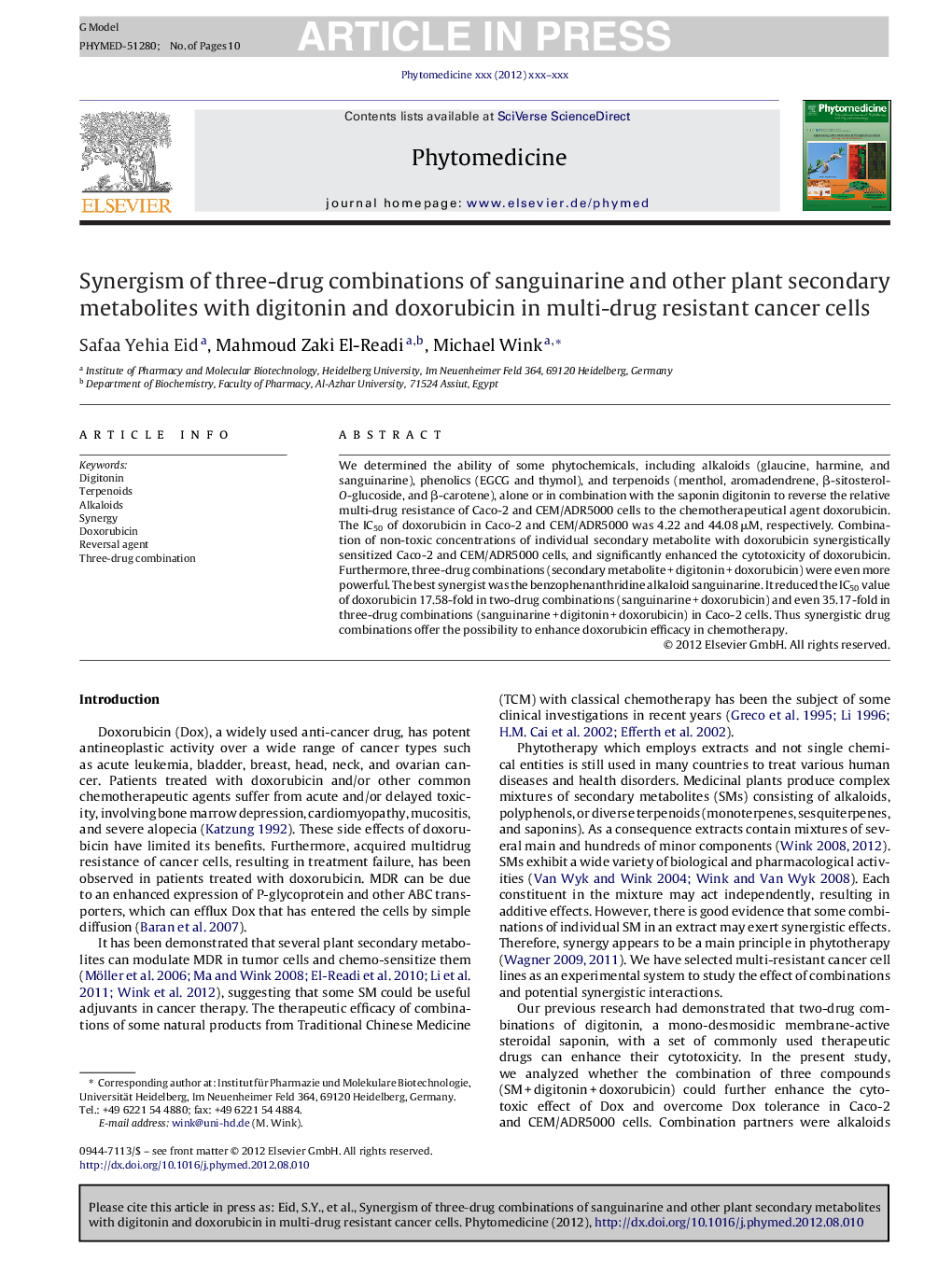| Article ID | Journal | Published Year | Pages | File Type |
|---|---|---|---|---|
| 5816781 | Phytomedicine | 2012 | 10 Pages |
Abstract
We determined the ability of some phytochemicals, including alkaloids (glaucine, harmine, and sanguinarine), phenolics (EGCG and thymol), and terpenoids (menthol, aromadendrene, β-sitosterol-O-glucoside, and β-carotene), alone or in combination with the saponin digitonin to reverse the relative multi-drug resistance of Caco-2 and CEM/ADR5000 cells to the chemotherapeutical agent doxorubicin. The IC50 of doxorubicin in Caco-2 and CEM/ADR5000 was 4.22 and 44.08 μM, respectively. Combination of non-toxic concentrations of individual secondary metabolite with doxorubicin synergistically sensitized Caco-2 and CEM/ADR5000 cells, and significantly enhanced the cytotoxicity of doxorubicin. Furthermore, three-drug combinations (secondary metabolite + digitonin + doxorubicin) were even more powerful. The best synergist was the benzophenanthridine alkaloid sanguinarine. It reduced the IC50 value of doxorubicin 17.58-fold in two-drug combinations (sanguinarine + doxorubicin) and even 35.17-fold in three-drug combinations (sanguinarine + digitonin + doxorubicin) in Caco-2 cells. Thus synergistic drug combinations offer the possibility to enhance doxorubicin efficacy in chemotherapy.
Related Topics
Life Sciences
Biochemistry, Genetics and Molecular Biology
Clinical Biochemistry
Authors
Safaa Yehia Eid, Mahmoud Zaki El-Readi, Michael Wink,
